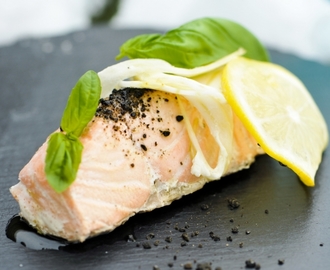Vanaf vandaag hebben we een nieuwe kaart bij Restaurant De Wereldkeuken

Appetizers
Kipkluifjes
met pittige dipsaus
3 Mezze’s
met Turks brood
Nachos uit de oven
mettomatensaus en Jalapeños
Gefrituurde inktvisringen
met knoflooksaus

De voorgerechten
Mexicaanse bulgur salade ook wel bekend als taboulé
met avocado, kidneybonen, tomaat, rode ui en feta kaas

Belgische witlofsalade
met gepofte pompoen, zuur van komkommer, walnoten en abdijkaas
Carpaccio van tonijn
met rucola, rode uien compote, kappertjes en citroenmayonaise
Huisgemaakte garnaalkroketjes
met gefrituurde peterselie en dille-mayonaise
Australische meat pie
met rode uien marmelade
Soepen
Bourgondische heldere vissoep
Knoflook roomsoep met amandel
soep van de dag
hoofdgerechten
Tamme eendeborst bereid op Japanse wijze
met noedels, paksoi, wakamé en teriyaki saus
Marokaanse tajine van kip
met pruimen, wortel, olijven en cous cous
Argentijnse chimichurri met bavette steak, ook wel vacio genaamd in Argentinië.
met gegrilde courgette en ovenaardappelen

Gevulde paprika
met zoete aardappel risotto gegratineerd met kaas

Zalm papillote en venkel
met beurre blanc en gepofte trostomaatjes
Natuurlijk blijft de oude vertrouwde Culinaire Wereldreis ook op de kaart.
Een drie gangen menu bestaande uit een serie gerechten en hapjes van o.a. onze kaart
Nagerechten
Engelse bread & butter
met kaneelijs
Portugese pastilla de nata
met vanille ijs
Diverse lekkernijen van onze kaart
Chocolade parfait
met vanillesaus en Franse macarons
Kindergerechten
Kipkluifjes
met friet en salade
Mini hamburger
met friet en salade

Nieuw op de lunch kaart is de chiabatta pulled chicken met BBQ saus, het wereldreisje (een soepje met drie belegde mini broodjes), de chiabatta abdijkaas met uienmarmalade en walnoten en de lunchversies van de Mexicaanse bulgur salade
met avocado, kidneybonen, tomaat, rode ui en feta kaas en de Belgische witlofsalade met gepofte pompoen, zuur van komkommer, walnoten en abdijkaas. Verder komen er, op veler verzoek, twee oude bekenden terug op de lunchkaart te weten de tosti Hawaï en de uitsmijter (met ham en/of kaas)
Naast de diner- en lunch kaart serveren we ook nog de borrelkaart met huisgemarineerde olijven, bitterballen, inktvisringen met knoflooksaus, Buffelo chicken wings met pittige dipsaus en de 3 mezze’s met Turks brood.
Informatie over de Chimichurri saus;
What is Chimichurri Sauce?
For far too long in my life, I didn’t know what chimichurri was. I’d been told it was “South American steak sauce,” so pictured something spicy and red, which isn’t usually my choice for meat. Then I learned – chimichurri isn’t red at all. It’s an intensely green, intensely garlicky, herbed vinaigrette. Minced parsley and lots of garlic are its hallmarks, and oregano is the principle herb. Though chimichurri is used primarily on grilled beef, it’s actually good on just about everything, including pork, lamb, sausages, poultry, fish, as a marinade and even as a dressing for salads and vegetables.
Chimichurri History
There’s general agreement that chimichurri is a specialty of Argentina and Uruguay – but did it begin here? And what does chimichurri mean, anyway?
There are several answers to both of these questions. There’s actually no such word as chimichurri, which has led to all sorts of speculation. Although Miguel Brascó, a noted Argentinian journalists and gourmet, claimed it was a word of mixed English, Spanish, and native South American origins that came about in the early 19th century when captured British invaders asked for food, the theory is neither proven nor convincing. Another theory also implicates the British, saying the word as a riff on the name of a local meat vendor, Jimmy Curry. Unless more evidence comes to light, I don’t believe that one either.
The story I find the most convincing is that the name and the sauce arrived with the Basques who immigrated to Argentina in the 19th century. The original Basque word, tximitxurri, means “a mixture of things in no particular order.”
Chimichurri was virtually unknown in America until the late 20th century, when the grilling craze demanded recipes for both marinades and sauces. A recipe for chimichurri appears in the Time-Life Foods of the World series volume on Latin American cuisine. Published in 1971, the book came at a time when Americans were still heavily into barbecue sauce, and brushing a little Italian dressing on chicken was considered wildly international. It took another generation for chimichurri to catch on.

Reserveren
Bel ons op 026 – 382 75 49
of klik hier



